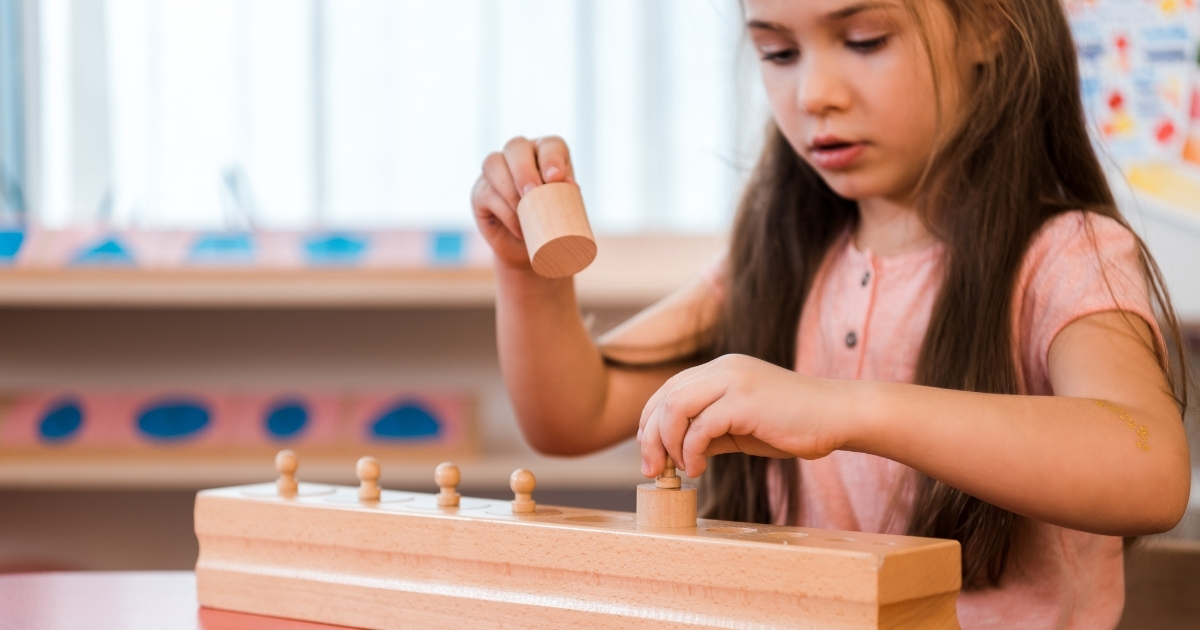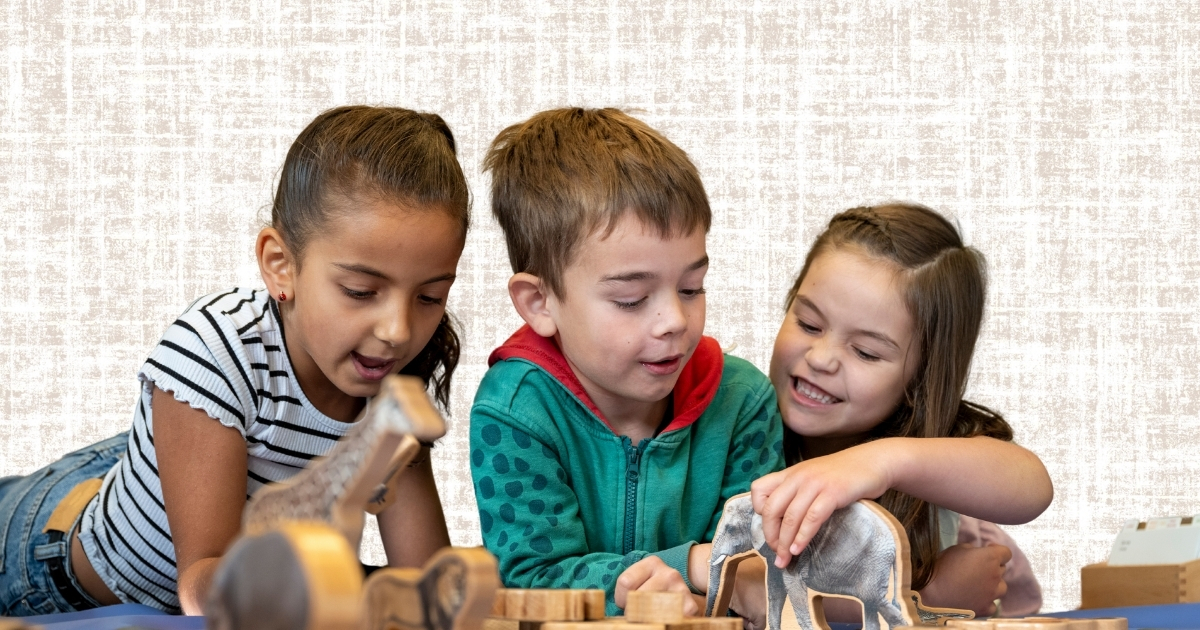Homeschooling offers a valuable opportunity to tailor education to your child’s unique needs, interests, and pace. Using Montessori homeschool principles can elevate this experience by fostering independence, curiosity, and hands-on learning. Rooted in the teachings of Dr. Maria Montessori, this approach encourages children to explore, discover, and learn through guided but self-led activities.
Below, we’ll explore how to seamlessly incorporate Montessori principles into your homeschooling routine with practical tips and everyday activities.
Create A Prepared Environment At Home
The prepared environment is a hallmark of the Montessori method. It’s designed to support independence, concentration, and exploration. Creating a Montessori-inspired space at home doesn’t require a complete transformation but does involve mindful planning.
- Child-Sized Furniture
Providing furniture that’s scaled for children is one of the simplest ways to encourage independence. Low tables, chairs, and open shelving make it easy for kids to access materials, take ownership of their workspace, and interact comfortably.
- Defined Learning Zones
Organize your homeschooling space into designated zones for various activities. For example, you could set up a quiet reading corner, a creative art station, and a hands-on math area. Keeping these spaces distinct and organized helps children focus on the task at hand.
- Natural and Calming Aesthetics
Montessori environments often use natural materials and neutral colors. Incorporate wooden furniture, soft lighting, and uncluttered decor to create a calming atmosphere that aids concentration.
- Organized Materials
Store learning tools and supplies on open shelves, neatly arranged in baskets or trays. This helps children see and choose their activities, encouraging self-direction. Rotate items regularly to keep the options fresh and engaging without overwhelming them.
- Practical Life Stations
Include areas where children can practice everyday life skills, such as a small kitchen station for food preparation or a mini cleaning station with child-sized tools. These spaces make it easy to integrate life skills into learning.
An effective prepared environment empowers children to take charge of their learning, promoting independence and engagement in your Montessori-inspired homeschool.

Daily Montessori Activities For Homeschooling
One of the strengths of Montessori education is its seamless integration of learning into everyday life. Here are activities across different categories you can include in your daily homeschool routine.
Practical Life Activities
Practical life skills lay a foundation for independence while teaching focus, coordination, and responsibility. Here’s how to incorporate them into your homeschool:
- Food Preparation
Invite your child to help make simple meals or snacks. Tasks like peeling fruit, measuring ingredients, or stirring mixtures not only teach life skills but also develop fine motor skills and an understanding of measurements.
- Gardening
Introduce responsibilities like watering houseplants, planting seeds, or pulling weeds. Beyond the physical benefits of gardening, it fosters a connection with nature and encourages patience.
- Cleaning and Tidying
Encourage children to take part in household upkeep. Provide child-sized cleaning supplies, like a small mop or dustpan, to help them develop an understanding of cleanliness and responsibility.
- Self-Care Skills
Activities such as buttoning a shirt, tying shoelaces, or brushing hair can be practiced with support. Use practice boards or create opportunities for them to work on these skills during the day.
Academic Learning Activities
Montessori education introduces academic concepts in tactile and engaging ways that make abstract ideas easier to grasp.
- Math
-
- Use objects like wooden beads, blocks, or coins for counting, addition, and subtraction.
-
- Practice grouping and sorting by size, color, or shape using everyday items like spoons or buttons.
-
- Introduce basic fractions by cutting fruits like apples or oranges into equal parts.
- Science
-
- Create a nature observation activity. Ask your child to collect leaves, rocks, or flowers and identify patterns or differences. Provide a magnifying glass for closer inspection.
-
- Conduct simple science experiments, such as mixing baking soda and vinegar or creating a mini weather station to measure rainfall.
- Language and Literacy
-
- Introduce sandpaper letters for tactile learning. Children trace letters with their fingers while saying the corresponding sound, reinforcing phonics.
-
- Label items around the house (e.g., “lamp,” “chair”), and ask your child to match the word to the object.
-
- Create picture-story sequencing cards that children can arrange into a logical order and use as prompts to tell or write a story.
Artistic Exploration
Art and music are celebrated elements of Montessori education, as they encourage creativity and individual expression.
- Open-Ended Art Projects
Provide materials such as paint, markers, or clay and allow your child to create freely. Avoid giving rigid instructions—self-driven creativity is the goal.
- Music Exploration
Play various types of music and discuss how the sounds differ. Alternatively, introduce simple instruments like tambourines or recorders for your child to experiment with.
The activities listed here bring a Montessori-inspired approach to both practical and academic learning, making homeschooling both fun and enriching.
Tips For Incorporating Montessori Principles
Transitioning to a Montessori-inspired homeschool doesn’t have to occur all at once. Small, deliberate changes can make a significant difference.
- Observe Your Child
Pay attention to your child’s habits, interests, and developmental stage. Use these observations to curate activities and materials that align with their natural curiosity. For example, if they’re fascinated by animals, incorporate activities like creating a habitat diorama or reading stories about wildlife.
- Start Small
Introduce one Montessori-inspired activity or change at a time. Perhaps begin by creating a prepared environment or including a practical life activity in the day’s schedule, gradually building from there.
- Allow Time for Uninterrupted Focus
Montessori learning promotes concentration. Once your child is engaged in an activity, avoid interrupting them unless necessary. Use this time to work on your own tasks or prepare the next activity.
- Rotate Learning Materials
Keeping the environment fresh is essential for maintaining your child’s interest. Rotate items like books, puzzles, or activity kits every few weeks to introduce novelty without overwhelming them.
- Provide Opportunities for Independence
Allow your child to choose their activities whenever possible. For instance, if they enjoy sorting, give them various objects like beads, buttons, or leaves that they can explore freely.
- Limit Distractions
Keep the learning space free from unnecessary noise or clutter. A simple and organized area fosters attention and calmness.
These practices ensure that the Montessori method integrates harmoniously into your homeschooling routine, creating a nurturing space where your child can flourish.
Supporting Lifelong Independence
Montessori principles emphasize helping children master life skills and gain independence, preparing them for challenges both in and out of an academic setting. This philosophy extends far beyond learning numbers and letters.
Encourage your child to take part in daily decision-making, whether it’s creating their schedule or choosing the order of their lessons. For example, they might plan activities like starting with a hands-on art project and moving on to math. Allowing them to make these choices cultivates self-reliance and accountability.
Additionally, emphasize effort over results. When children are rewarded for persistence and creativity rather than perfection, they develop a growth mindset. They’ll learn that mistakes are opportunities for growth rather than failures, fostering resilience and confidence.
Montessori homeschooling transforms education into an empowering experience. When children feel supported but free to explore independently, they grow into curious, enthusiastic learners who thrive not only academically but also emotionally and socially. Establishing a nurturing, child-centered environment benefits both their current education and their lifelong development.




